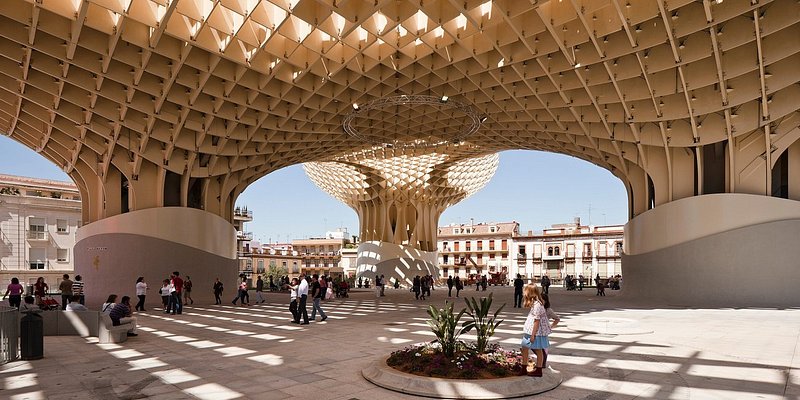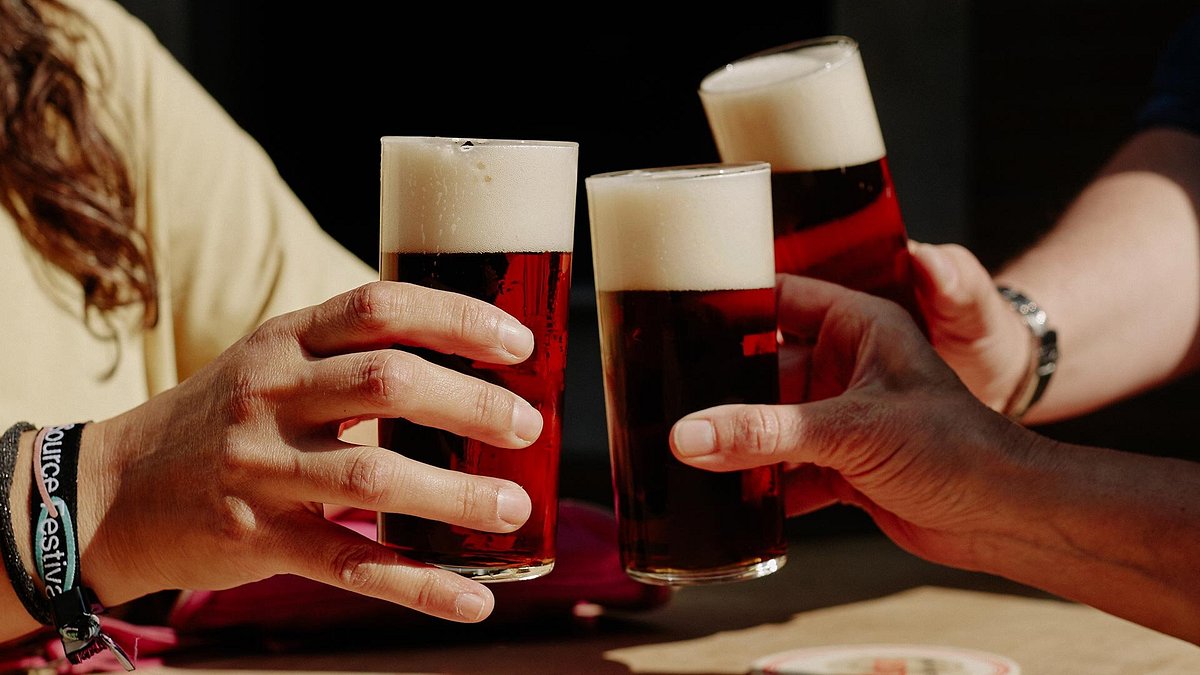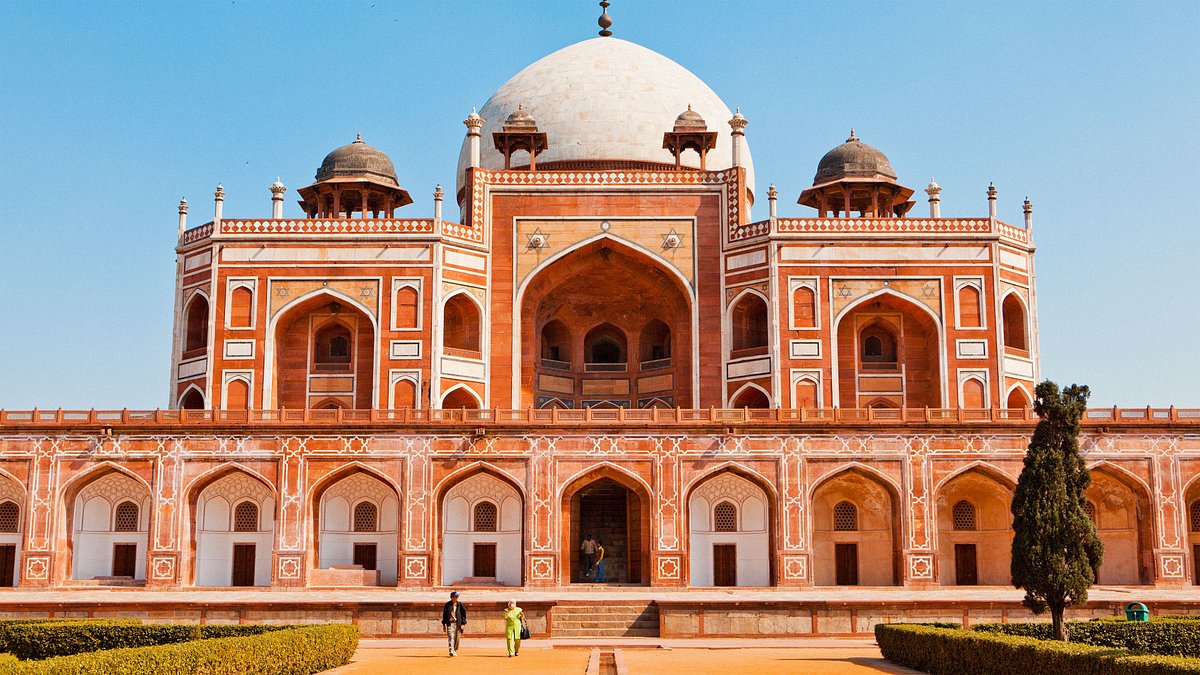Take it from us, any trip to Spain should include a stop in Seville. The Andalusian capital is home to Flamenco dancing, Mudéjar architecture, and an incredible tapas scene, not to mention the city has one of the most beautiful plaza’s we’ve ever seen.
The best part is that the majority of Seville’s top sights are located in its most central neighborhoods. Meaning, even if you only have two days to spend here, you can easily eat, drink, and dance your way through the city, taking in the best the city has to offer in just 48 hours.
This two-day guide brings together my expert knowledge and recommendations combined with plenty of insight from real Tripadvisor travelers.
DAY ONE
MORNING: Architectural wonders
Wake up and smell the jasmine-scented streets: You’ve arrived! Start your day with a traditional Sevillian breakfast of pan con tomate (bread with tomatoes and a splash of olive oil) at Bar Alfalfa. Then, wander about eight minutes south to the Catedral de Sevilla, a UNESCO World Heritage Site that’s also the largest Gothic church in the world. Built on the site of a former mosque, it’s home to 80 chapels and 25 bells, some of which you’ll inevitably hear ringing as you’re exploring the city later on. Climb the Giralda tower for panoramic views of the city (it’s worth the 35-story climb) in the morning to avoid the crowds.
Travelers say: “To get the best of the cathedral, book the guided tour of the roof for spectacular views and an interesting history of the building. Reserve tickets in advance! We tried to buy tickets three days before our visit to Seville, and they had already sold out for the English tour option. As you walk by the cathedral on the outside, see the different layers of the bell tower. The bottom is old Roman ruins, followed by Moorish brick, and finally topped by Christian features.” —@Grace
A five-minute walk away, you’ll find the Iglesia Colegial del Salvador, with its beautiful baroque facades, an ornate altarpiece, and tiled domes. Tip: You can use the same ticket as the cathedral if you visit both within 24 hours.
AFTERNOON: Colorful palaces and historic plazas
For lunch, stop by La Antigua Bodeguita and grab a table on the patio. In the summer, the restaurant sprays a fine mist outside to counteract the hot weather. If you want something small, try the montadito (mini open sandwich) with squid and aioli. For something larger, order the sirloin steak and wash it down with a cool cerveza.
You can easily walk to your next stop, the Royal Alcázar. This historic palace traces back to the 10th century, complete with Mudejar, Gothic, Renaissance, and Baroque influences. Don’t miss the colorful gardens, home to peacocks and orange trees. Give yourself at least two hours to explore the palace and don’t rush after lunch—the grounds get less and less busy as it gets later in the afternoon.
The shaded, intricately-decorated gardens will guide you to your final stop: Plaza de España. One of Seville’s prettiest areas, this plaza is punctuated with paintings detailing every city in Spain. It is also surrounded by a moat, where you can rent paddle boats.
SEVILLE SIGHTSEEING TOURS
- Explore Seville and its surroundings by taking a panoramic cruise on the Guadalquivir River on this eco-cruise tour.
- Cycle around Seville’s picturesque plazas and historic landmarks on this scenic bike tour.
- Check out the Cathedral, Alcazar, and Giralda tower individually. Skip the long lines with this guided tour of all three.
EVENING: Shopping and sunset sips
Walk back through the Alcázar to the Santa Cruz neighborhood, Seville’s former Jewish quarter, and one of the most charming and historic areas of the city. This maze of streets is perfect for a pre-dinner exploration, with tiny courtyards, fountains, and local boutiques.
Make sure to get to La Terraza de EME before sunset. Tucked down a side street by the cathedral, this rooftop bar has a great house white wine that you can enjoy at golden hour. With sweeping views of the city skyline and the cathedral front-and-center, you’ll also be able to hear the bells ring every hour.
There are plenty of tapas restaurants scattered around the cathedral, and most of them offer similar dishes. Look out for the fried dogfish, anything pork cheek-based (especially croquettes), oxtail stew, and tomato salads. Mateos Bar is one of the best because of its killer red wine spritzers. Got a sweet tooth? Buy a scoop of chocolate mousse ice cream at Heladería Bolas.
Worthy detours along the way
DAY TWO

MORNING: Breakfast and bullfights
You’re on holiday, which means chocolate for breakfast is perfectly acceptable. Grab churros at La Esperanza as you meander through the city center on your way to Real Maestranza, the oldest bullring in Spain. Although bullfighting is a controversial topic in Spain, the Baroque architecture of the building itself is worth admiring, even if you don’t fancy the full tour.
AFTERNOON: Picnic lunch and modernist structures
You’ll spot the Mercado de la Encarnación before you’ve realized what it is, as it sits in the shadow of Metropol Parasol, locally referred to as Las Setas (the mushrooms). This recently-renovated market (closed on Sundays) is ideal for grabbing a to-go lunch. Pick up fresh fruit, vegetables, and cured meats, then eat it upstairs in the cool shade of the futuristic fungi structure. After, climb up to the observation deck, where you can take a virtual reality tour.
Next up: Seville’s Museum of Fine Arts, which is a treasure trove of Spanish art. The museum sits in a converted 17th-century convent and is considered the second most important gallery in the country, after the Prado in Madrid. On the weekends, you’ll find an art market just outside, where you can pick up paintings and sketches from local artists.
Travelers say: “Metropol is a photographer’s paradise, offering so many unique viewpoints. Take a picture of these modern parasols framing the neighboring traditional Spanish houses. And don’t miss the walkway on top; it has great views of the city and cathedral. There’s also a bar up there, where you can enjoy the scenery. Tip: Come back after dark when it’s illuminated.” —@AlpinerHut
EVENING: Traditional tapas
At sunset, stroll along the riverfront promenade for views of the iconic Torre del Oro. Then, cross the bridge to Triana—a haven of tapas, ceramics, Flamenco dancing, and live music. Explore Calle Betis, Seville’s scenic street, and stop wherever the music draws you in. This local neighborhood is buzzy at night as it has an endless amount of restaurants. Most of the bars here offer a free bite with a drink.
Check out the view from the terrace at La Primera del Puente, which has sat here since before the Spanish Civil War, or try the fried fish at El Mero. Many of the bars have seats overlooking the river although, the later the evening gets, the more filled up these become.
End your evening with a Flamenco show (they usually take place between 7 to 10 p.m.). If you don’t book it in advance, you’ll find countless bars offering flyers on the streets around Triana (and wider Seville). Tablao El Arenal has one of the most popular Flamenco shows or, if you’re staying in Santa Cruz, Los Gallos offers a lively production.
- Arguably the best way to explore Seville is through its food. This group walking tour explores the city and offers tastings of traditional tapas and four local wines.
- After exploring the vibrant Mercado de Triana, nibble on olives and Sangria as you help the chef prepare a three-course meal in this Spanish cooking class.
Worthy detours along the way
Know Before You Go
-
Seville is busy year-round, although the best time to visit is between March to May. During the summer months, temperatures often exceed 104 and shops close for a few hours in the afternoon. During spring, you’ll find the two most famous festivals in Seville: Semana Santa (Holy Week) and Feria de Abril (April Fair), when the city is busier and prices are higher.
-
Seville is a lively, vibrant city any day of the week, but you’ll find a few perks on specific days. On Sundays, some of the city’s museums and monuments offer free admission, including the Real Alcázar, the Cathedral, and the Torre del Oro. If you’re visiting Seville for its bars and nightlife, visit on Friday and Saturday.
-
Most shops and businesses open from 9 a.m. to 2 p.m. and from 5 to 8 p.m., Monday to Saturday. Some larger stores and malls may stay open all day, especially in the tourist areas. On Sundays, most shops are closed, except for souvenir shops and convenience stores. Restaurants and cafés usually open from 8 a.m. to 11 p.m., but close between 4 and 8 p.m. for siesta. Some tapas bars may stay open until 2 a.m. or later, especially on weekends.
-
Santa Cruz: Most travelers stay in this old Jewish quarter as it’s the most picturesque (and convenient!) area in the city. But be warned: You’ll definitely get lost in its maze-like streets on your first day. The EME Catedral Mercer Hotel has incredible cathedral views (especially at night) and the Hotel Dona Maria has a super-central location.
Triana: This residential neighborhood across the river features beautiful buildings, lively markets, and old-style tapas restaurants (with cheaper prices). It’s a little quieter than Santa Cruz but still well-located. Stay at the Flamenco-inspired Triana House or Cavalta Boutique Hotel to make use of its spacious pool in the summer months.
Alfalfa: This barrio is a great place to experience the nightlife and culture of Seville. Young travelers or groups of friends will enjoy its cool shops, cafés, and bars. Stay at La Casa del Maestro, a family-run boutique hotel with a rooftop terrace. Or, if you want to splash out, check into Corral del Rey, a chic 17th-century mansion with a plunge pool.
-
On foot: Seville is a very walkable city, so most visitors stay in the city center and stroll to the major sights.
By bike: If the heat is too much and/or you’d rather speed up the process, there are electric scooters and bikes on virtually every street corner. Tip: There are discount codes written on the handlebars that give you a free first ride. The city is very well designed for cyclists, with bike lanes on each road.
By public transit: Seville also has a great public transport network, with a metro, tram line, and bus system. The Metro offers a cheaper day pass than the tram or bus and is generally faster, too.
By taxi: If you want a lift, you can use rideshare apps like Uber, Free Now, or Cabify. You can also hail a (metered) taxi off the street.




